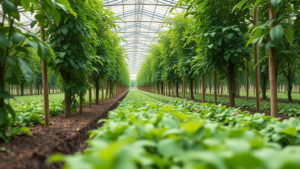Top 9 Benefits of Sustainable Living
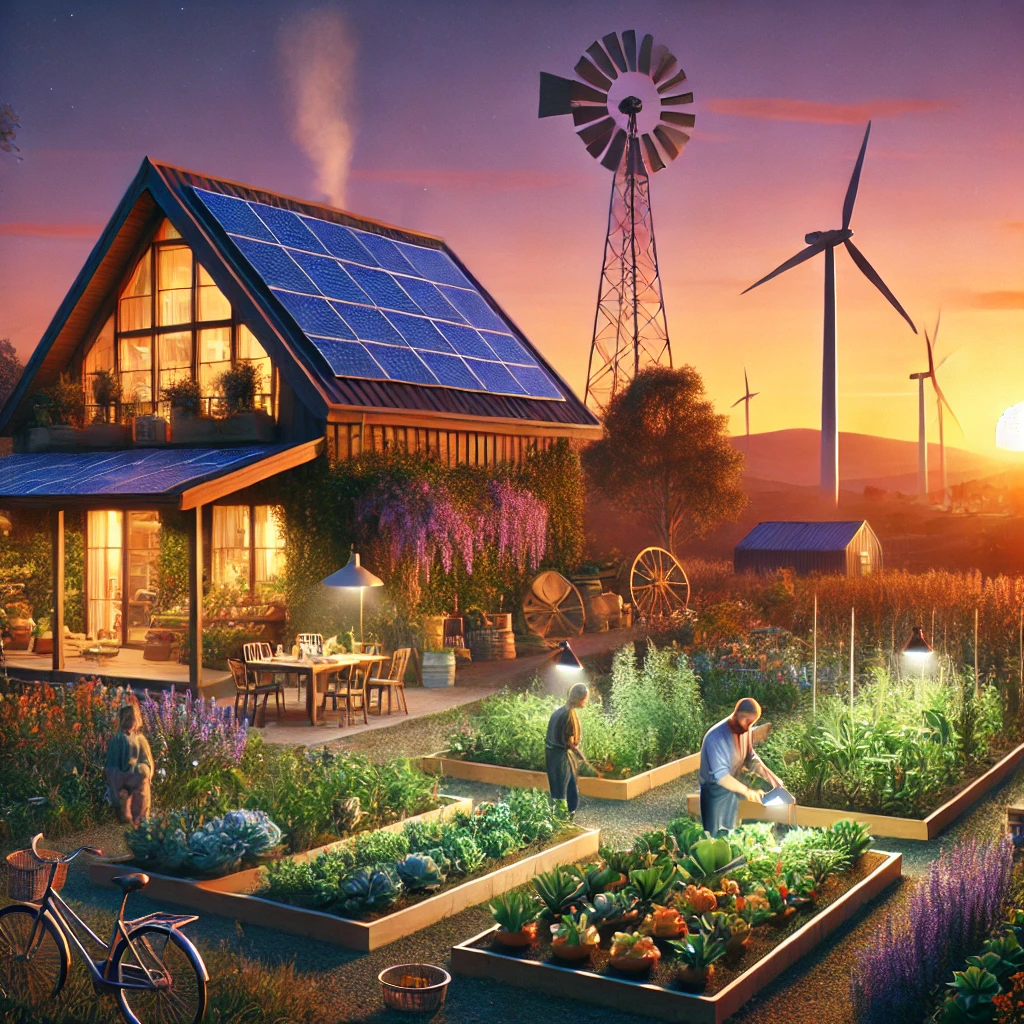
In today’s world, sustainable living is more than just a trend—it’s necessary. With environmental challenges growing, embracing a lifestyle that reduces waste, conserves resources, and promotes well-being has never been more important. But the benefits go beyond helping the planet. From saving money to improving your health, sustainable living can transform your life unexpectedly. Curious how? Keep reading to discover the top five reasons why adopting sustainable practices is a smart choice for you and the world.
1. What is Sustainable Living?
Sustainable living is a lifestyle that aims to minimize one’s impact on the environment while promoting the well-being of people, communities, and the planet. It involves making intentional choices in daily life to reduce the consumption of natural resources, limit waste, and avoid practices that harm ecosystems. At its core, sustainable living encourages a balance between human needs and the health of the environment to ensure that future generations can thrive.
Key aspects of sustainable living include reducing energy use, conserving water, choosing eco-friendly products, and supporting local economies. It’s about being mindful of how your actions affect the world around you, from the food you eat to the transportation you use.
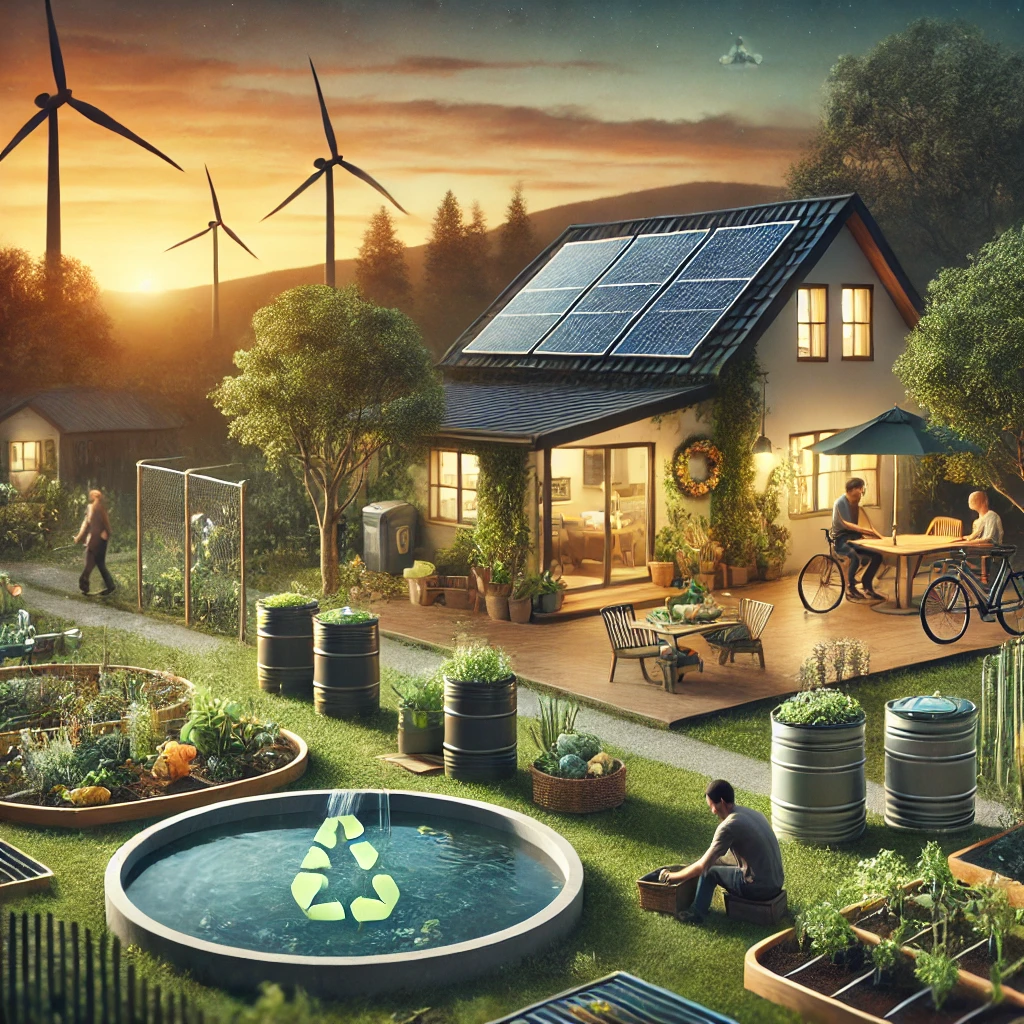
Sustainable living often starts small—like reducing plastic use or cutting down on energy consumption but can evolve into more significant lifestyle changes such as adopting renewable energy, growing your food, or switching to eco-friendly transportation methods. It’s not about being perfect; it’s about making gradual shifts that collectively lead to a larger, positive impact on the environment and society.
Ultimately, sustainable living is about making conscious decisions that align with the long-term health of our planet while improving quality of life. Whether it’s through supporting local businesses, minimizing waste, or adopting energy-efficient practices, the goal is to live in harmony with nature, reducing our ecological footprint while ensuring a thriving, sustainable future.
2. Why is Sustainable Living Important?
Sustainable living is crucial for the long-term health of our planet and its inhabitants. As human activities continue to strain natural resources and contribute to environmental degradation, adopting sustainable practices becomes increasingly vital. Here’s why sustainable living matters:
1. Combatting Climate Change
One of the biggest reasons sustainable living is essential is its role in reducing the effects of climate change. Fossil fuel consumption, deforestation, and industrial processes release large amounts of greenhouse gases into the atmosphere, contributing to global warming. By embracing renewable energy, reducing waste, and using fewer resources, sustainable living helps lower carbon footprints, mitigating the impact of climate change.
2. Preserving Natural Resources
Earth’s resources, like water, forests, and fossil fuels, are finite. Sustainable living focuses on conserving these resources by using them more efficiently and supporting practices that regenerate rather than deplete them. This helps ensure that future generations will have access to clean water, fertile soil, and the materials they need to thrive.
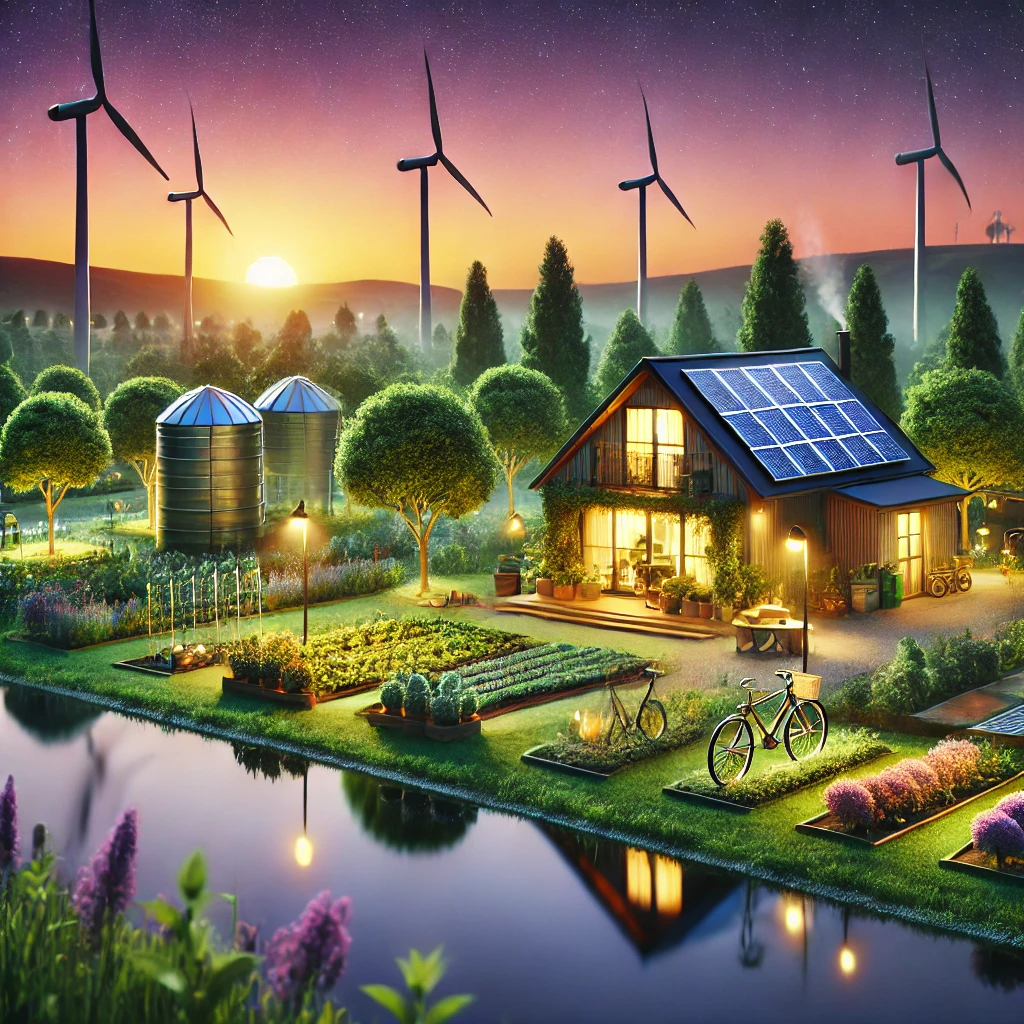
3. Reducing Waste and Pollution
Waste is a significant environmental issue, with landfills overflowing and oceans polluted with plastics. Sustainable living encourages reducing, reusing, and recycling, which lowers the volume of waste produced. It also reduces pollution by minimizing the use of harmful chemicals, limiting air and water contamination, and decreasing the demand for single-use products that contribute to pollution.
4. Improving Public Health
Sustainable living has direct benefits for public health. Reducing pollution improves air and water quality, which leads to fewer respiratory issues, cleaner food, and healthier communities. By reducing exposure to harmful chemicals and toxins found in conventional products and industrial processes, people can experience improved health and well-being.
5. Supporting a More Equitable Society
Sustainable living is not only about the environment—it’s about social responsibility as well. By supporting fair trade, ethical labor practices, and locally produced goods, sustainable living contributes to building more just and equitable communities. It fosters economic resilience by promoting small businesses and local economies, ensuring that the benefits of sustainable practices are shared among all members of society.
In summary, sustainable living is essential for addressing some of the most pressing environmental and societal challenges we face today. It allows us to live more responsibly, protect the earth’s ecosystems, and create a healthier, fairer world for everyone. The choices we make today in favor of sustainability can have lasting positive impacts on future generations and the planet as a whole.
3. Top 5 Benefits of Sustainable Living
Sustainable living offers a wide range of advantages, benefiting not only the environment but also your well-being and finances. Below are the top five reasons why adopting a sustainable lifestyle can transform your life and contribute to a better world:
1. Improves Your Mental and Physical Health
Sustainable living promotes healthier habits that positively affect both your mind and body. For instance, using eco-friendly products reduces exposure to harmful chemicals and toxins, which can lead to improved air quality and less irritation to your skin and respiratory system. In addition, focusing on sustainable diets—such as eating more plant-based foods and reducing processed products—has been linked to better physical health, including lower risks of chronic diseases like heart disease and diabetes.
Beyond physical benefits, sustainable living also has a positive impact on mental health. Engaging in activities like gardening, spending more time in nature, or walking or cycling instead of driving helps reduce stress, improve mood, and foster a sense of connection with the environment. These practices lead to better overall mental well-being.
2. Reduces Your Contribution to Landfills
One of the most immediate environmental benefits of sustainable living is the reduction of waste. Sustainable practices encourage mindful consumption, meaning you buy less, waste less, and reuse more. By opting for reusable products, recycling materials, and choosing items with minimal packaging, you drastically reduce the amount of waste that ends up in landfills.
Landfill waste is not only unsightly, but it also produces methane, a potent greenhouse gas that contributes to climate change. By reducing your contribution to landfills, you help minimize pollution, conserve space, and prevent the harmful environmental impacts associated with waste disposal.
3. Saves Money on Monthly Bills
Living sustainably can also have a direct impact on your finances. By adopting energy-efficient habits, such as using LED bulbs, insulating your home, and turning off appliances when they’re not in use, you can significantly reduce your energy consumption and, consequently, your utility bills. Likewise, using less water through conservation methods, such as installing low-flow fixtures, can lower your water bill.
Additionally, growing your vegetables, reducing reliance on cars, and minimizing the purchase of disposable products not only saves money but also promotes a more frugal, resourceful lifestyle. Over time, these small savings add up, allowing you to keep more money in your pocket while benefiting the planet.
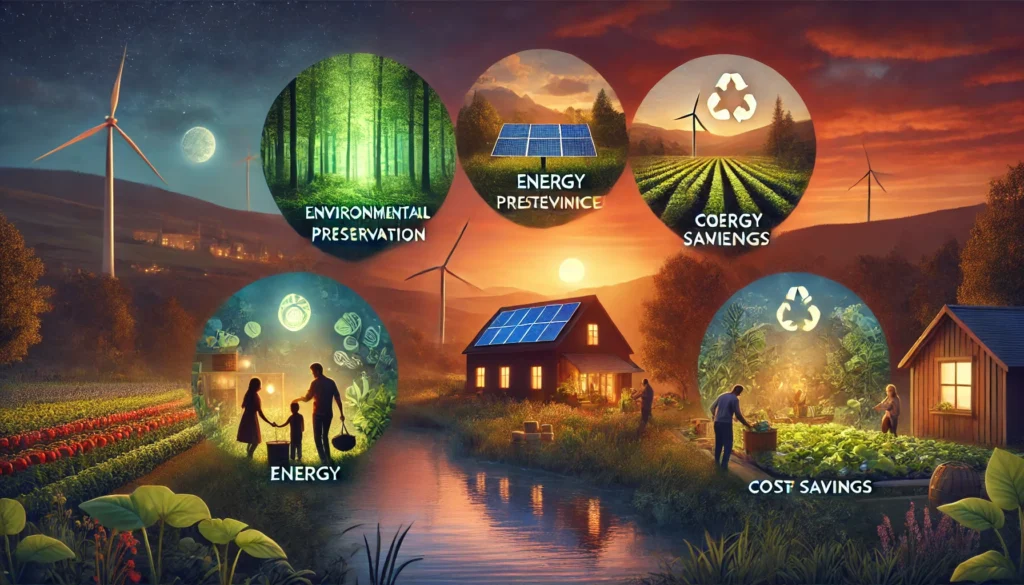
4. Protects Biodiversity and Natural Resources
Sustainable living plays a crucial role in protecting biodiversity and conserving natural resources. By making choices that reduce pollution and avoid unnecessary consumption, you help preserve ecosystems and the species that depend on them. Whether it’s choosing organic produce that avoids harmful pesticides, supporting sustainable farming, or reducing your water and energy use, each action helps safeguard the environment.
The protection of biodiversity is critical for maintaining the health of the planet’s ecosystems, which provide us with clean air, water, and food. By living sustainably, you contribute to the preservation of these vital systems, ensuring that natural resources are available for future generations.
5. Builds Resilient and Fair Communities
Sustainable living encourages support for local economies, fair trade, and ethical practices, which in turn helps to build stronger, more resilient communities. By purchasing from local farmers and businesses, you invest in your community and reduce the environmental impact associated with long-distance shipping and mass production.
Furthermore, sustainable living emphasizes social equity by promoting practices that are fair to workers and producers. Supporting businesses that uphold ethical labor standards and fair trade ensures that people across the supply chain are treated fairly and paid equitably. By building a sense of shared responsibility, sustainable living strengthens the social fabric of communities and promotes a more just and equitable world.
4. How Sustainable Living Saves You Money
One of the most appealing aspects of sustainable living is its potential to save you money in the long run. While some sustainable practices may seem like an initial investment, the overall cost savings can be substantial over time. Here’s how sustainable living can help you cut down on expenses:
1. Energy Efficiency Reduces Utility Bills
By making your home more energy-efficient, you can significantly lower your electricity and heating costs. Simple actions like switching to LED or energy-saving light bulbs, unplugging appliances when not in use, and using energy-efficient appliances can reduce your energy consumption by up to 30%. More significant investments, such as adding insulation or installing solar panels, may involve upfront costs but lead to long-term savings by cutting your monthly utility bills and even earning credits for excess energy produced.
Smart thermostats, which adjust the temperature based on your habits and preferences, can also contribute to savings by optimizing heating and cooling, reducing unnecessary energy consumption. By using less energy, not only do you reduce your carbon footprint, but you also keep more money in your pocket.
2. Lower Water Bills Through Conservation
Water conservation is another way sustainable living can lead to financial savings. By installing low-flow faucets, showerheads, and toilets, you use less water without compromising functionality. Collecting rainwater for garden use, reducing the amount of water used for landscaping, and fixing leaky taps all contribute to water conservation and lower utility bills.
Simple habits like turning off the tap while brushing your teeth or using dishwashers and washing machines only with full loads can also make a big difference. Over time, these practices can significantly reduce your water bill, saving money while helping to conserve one of the planet’s most precious resources.
3. Reduced Transportation Costs
Switching to sustainable transportation options can be one of the biggest ways to cut costs. Instead of relying solely on a car, using public transport, cycling, carpooling, or walking whenever possible can save you substantial amounts on fuel, maintenance, parking, and insurance. For those who can, reducing car use or switching to a fuel-efficient or electric vehicle can lead to long-term savings, with fewer trips to the gas station and lower repair costs.
Electric vehicles (EVs) are becoming more affordable, and they not only help reduce carbon emissions but also lower fuel and maintenance costs. As charging infrastructure expands and government incentives for EVs continue to grow, making the switch becomes even more financially viable.
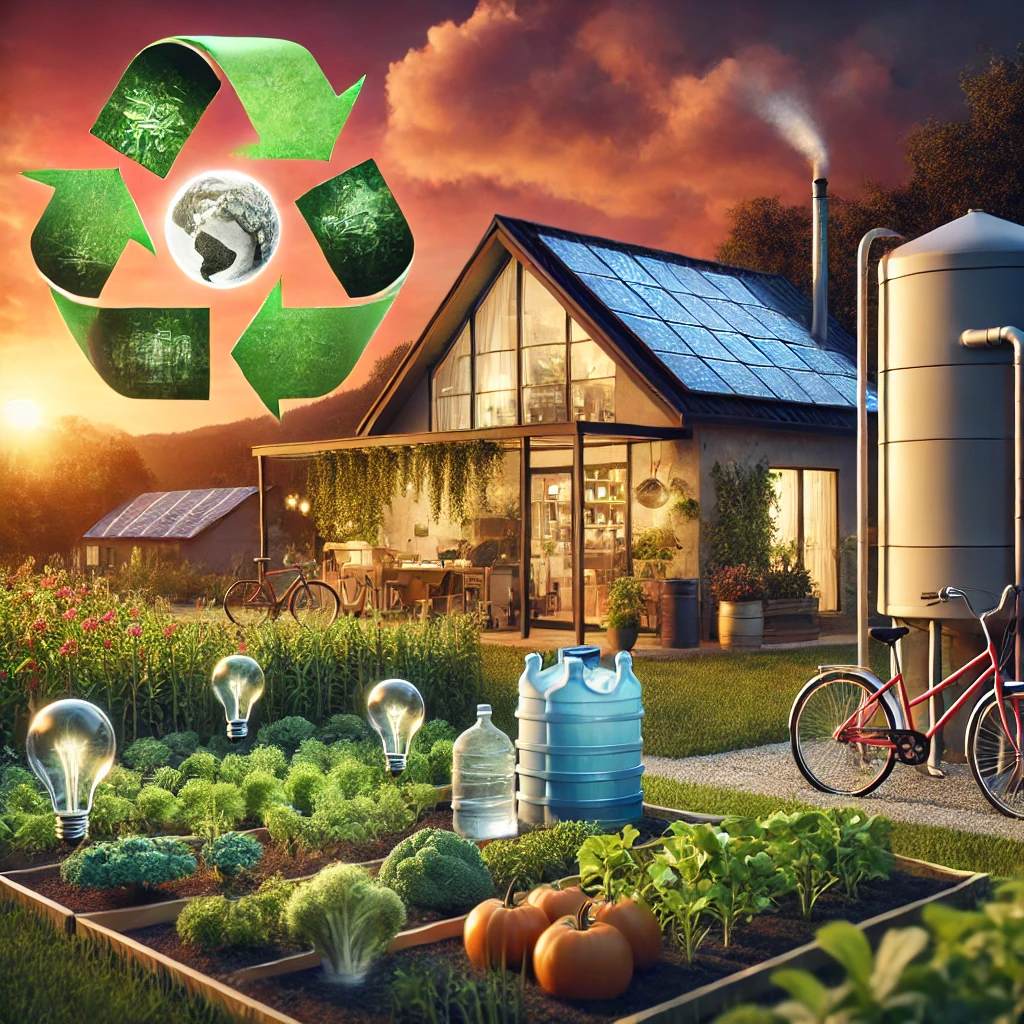
4. Less Waste, More Savings
Adopting a zero-waste or low-waste lifestyle reduces the need to constantly buy disposable or single-use products. By choosing durable, reusable items like stainless steel water bottles, cloth shopping bags, or glass food containers, you spend less over time compared to continually buying disposable plastics. Composting kitchen waste and buying in bulk can also cut costs by reducing the amount of food wasted or packaging discarded.
Additionally, repairing or upcycling items instead of throwing them away reduces the need for replacements, saving you money on new purchases. Sustainable living encourages mindful consumption, meaning you only buy what you need, which can lead to reduced impulse purchases and more savings in the long run.
5. Growing Your Food
One of the best ways to save money while living sustainably is to grow your food. Even small-scale gardening, such as growing herbs or vegetables in containers, can reduce your grocery bill. Over time, producing your fresh fruits, vegetables, and herbs eliminates the need to buy these items at the store, leading to significant savings.
In addition to the cost savings, home-grown food is often fresher, healthier, and free of harmful pesticides or chemicals. Community gardens or shared garden spaces also provide an affordable way to access fresh produce, reducing your grocery expenses while promoting sustainable, locally-grown food.
6. DIY and Sustainable Alternatives
Sustainable living often involves a shift toward do-it-yourself (DIY) solutions and making eco-friendly choices that reduce long-term costs. For instance, making your cleaning products using simple, natural ingredients like vinegar, baking soda, and essential oils can save money compared to purchasing commercial cleaners.
Similarly, using sustainable alternatives like reusable clothes instead of paper towels or investing in high-quality, long-lasting clothing instead of fast fashion items leads to fewer replacements and lower overall expenses. These small changes can add up over time, creating both financial and environmental benefits.
5. Health Benefits of Sustainable Living
Sustainable living doesn’t just benefit the planet—it also has significant advantages for your physical and mental health. By making eco-friendly choices, you reduce exposure to harmful chemicals, enjoy better air and water quality, and embrace healthier lifestyle practices that improve overall well-being. Here’s a closer look at the key health benefits of sustainable living:
1. Reduced Exposure to Toxins
Many conventional products used in households, such as cleaning agents, personal care items, and even food packaging, contain harmful chemicals like phthalates, parabens, and volatile organic compounds (VOCs). These chemicals can negatively affect your health, leading to respiratory issues, hormone disruption, and even increased cancer risk.
Sustainable living emphasizes using non-toxic, eco-friendly alternatives that are safer for you and the environment. Opting for natural cleaning products, organic foods, and personal care items free from harmful chemicals greatly reduces your exposure to toxins. This leads to fewer health risks and a cleaner, safer home environment.
2. Improved Air Quality
Air pollution is a growing concern, both indoors and outdoors. Indoor air can be polluted by fumes from chemical cleaning products, synthetic furnishings, and inadequate ventilation. Outdoor air pollution, often caused by vehicle emissions and industrial processes, contributes to respiratory problems like asthma, allergies, and other lung diseases.
Sustainable living practices, such as choosing non-toxic household products, reducing car use, and incorporating plants into your living space, can significantly improve indoor air quality. By decreasing your reliance on fossil fuels and embracing cleaner energy sources, you also contribute to reducing outdoor air pollution, which benefits your health and that of your community.
3. Better Mental Health
Living sustainably encourages a closer connection with nature, which has proven mental health benefits. Engaging in activities like gardening, spending time outdoors, or practicing mindfulness in green spaces can reduce stress, anxiety, and symptoms of depression. Studies have shown that being in nature boosts mood, improves focus, and enhances overall emotional well-being.
Additionally, the act of making mindful, sustainable choices fosters a sense of purpose and accomplishment. Knowing that your lifestyle is making a positive impact on the environment and society can increase feelings of satisfaction and personal fulfillment, which are key contributors to improved mental health.
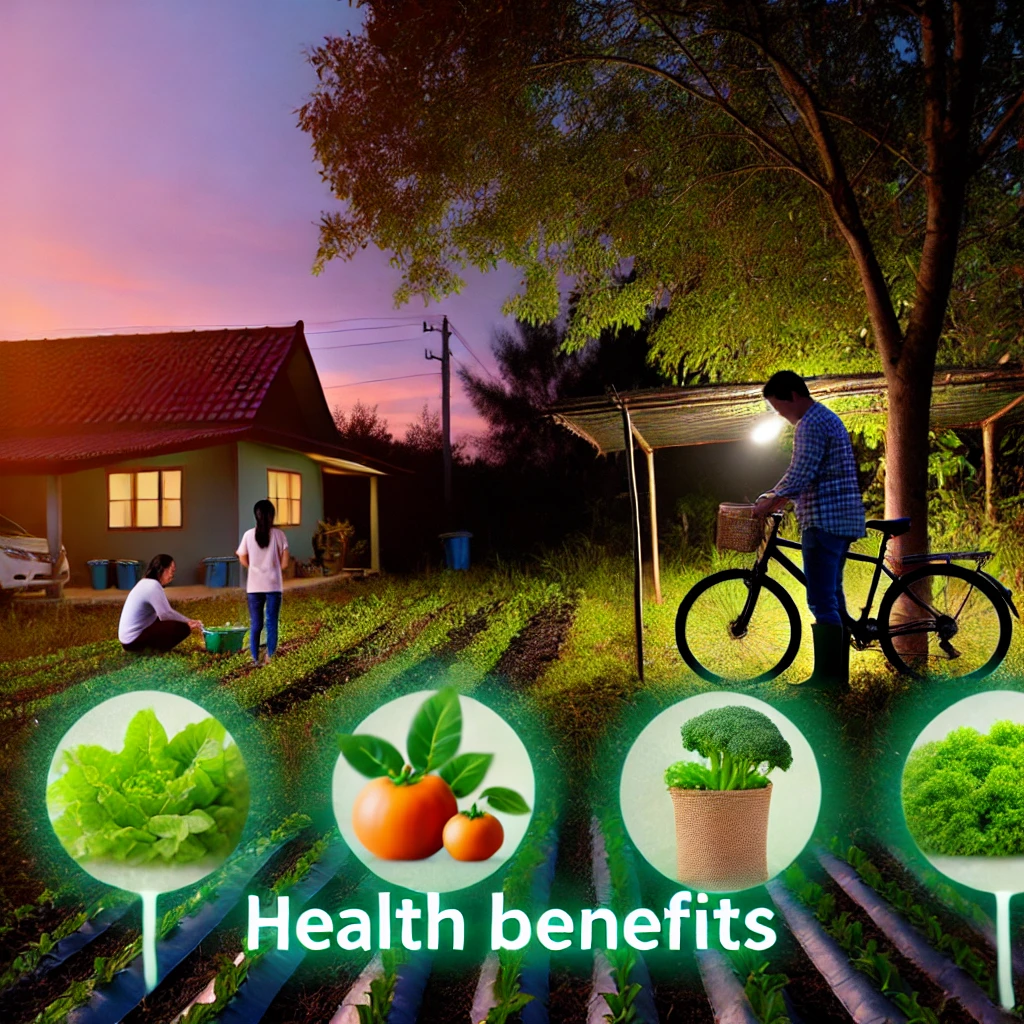
4. Healthier Diet and Nutrition
Sustainable living often promotes plant-based diets, organic farming, and local food consumption, all of which lead to healthier eating habits. By choosing fresh, seasonal, and organic foods, you reduce your intake of harmful pesticides and chemicals commonly found in processed foods and non-organic produce.
A diet rich in fruits, vegetables, and whole grains not only provides essential nutrients but also reduces the risk of chronic diseases like obesity, heart disease, and diabetes. Sustainable eating encourages mindful consumption, which helps you avoid highly processed, unhealthy foods and promotes a more balanced and nutritious diet.
5. Increased Physical Activity
Many sustainable living practices encourage physical activity, which is key to maintaining good health. For example, choosing to walk, cycle, or use public transport instead of driving not only reduces your carbon footprint but also boosts your physical fitness. These activities provide cardiovascular benefits, improve muscle strength, and increase overall energy levels.
Gardening, another common sustainable activity, is also a great way to stay active while growing your food. It’s a form of low-impact exercise that helps with flexibility, strength, and mental clarity, while also contributing to a healthier, greener lifestyle.
6. Cleaner Water and Food
Sustainable practices often involve efforts to conserve and protect water resources, ensuring access to cleaner and safer drinking water. Practices like reducing water waste, preventing pollution, and using natural alternatives for pest control help to preserve clean water sources, which are crucial for maintaining public health.
Similarly, sustainable farming and food production methods avoid harmful pesticides, fertilizers, and genetically modified organisms (GMOs). Eating sustainably grown or organic foods reduces your risk of ingesting harmful chemicals and ensures that the food on your plate is healthier, fresher, and better for the planet.
6. The Environmental Impact of Sustainable Living
Sustainable living plays a critical role in protecting and preserving the environment. By adopting eco-friendly habits and reducing our consumption of resources, we can mitigate some of the most damaging environmental issues of our time, including climate change, pollution, habitat destruction, and resource depletion. Here’s how sustainable living directly benefits the environment:
1. Reduction of Greenhouse Gas Emissions
One of the most significant environmental impacts of sustainable living is the reduction of greenhouse gas (GHG) emissions. These emissions, primarily from burning fossil fuels for energy and transportation, are the leading cause of climate change. By embracing renewable energy sources like solar, wind, or hydropower and reducing dependence on fossil fuels, sustainable living helps lower carbon dioxide (CO2) and methane emissions, two of the most harmful greenhouse gases.
Sustainable transportation options, such as walking, cycling, and using public transport, also contribute to reducing emissions. Electric vehicles (EVs) powered by renewable energy further reduce the carbon footprint of transportation, making it one of the most effective ways to combat climate change on an individual level.
2. Conservation of Natural Resources
Sustainable living emphasizes the efficient use of natural resources, helping to conserve vital materials like water, forests, and fossil fuels. Simple actions like reducing water usage, supporting sustainable farming practices, and choosing products made from recycled materials all contribute to preserving these finite resources.
Water conservation is particularly important as many regions around the world face increasing water scarcity. Sustainable living promotes practices like using water-efficient appliances, capturing rainwater for irrigation, and avoiding water waste. Similarly, choosing products that are responsibly sourced—such as sustainably harvested wood and recycled metals—helps preserve forests and reduces the demand for mining and deforestation.
3. Waste Reduction and Recycling
One of the core principles of sustainable living is reducing waste. Our modern lifestyle generates immense amounts of trash, much of which ends up in landfills or pollutes oceans, rivers, and forests. By focusing on reducing, reusing, and recycling, sustainable living minimizes the amount of waste that enters the environment.
Composting organic waste, choosing reusable products over single-use plastics, and supporting companies that use minimal or recyclable packaging are all effective ways to reduce waste. Recycling materials like paper, plastic, glass, and metal helps conserve resources and prevents harmful environmental consequences associated with landfills and incineration, such as toxic runoff and air pollution.
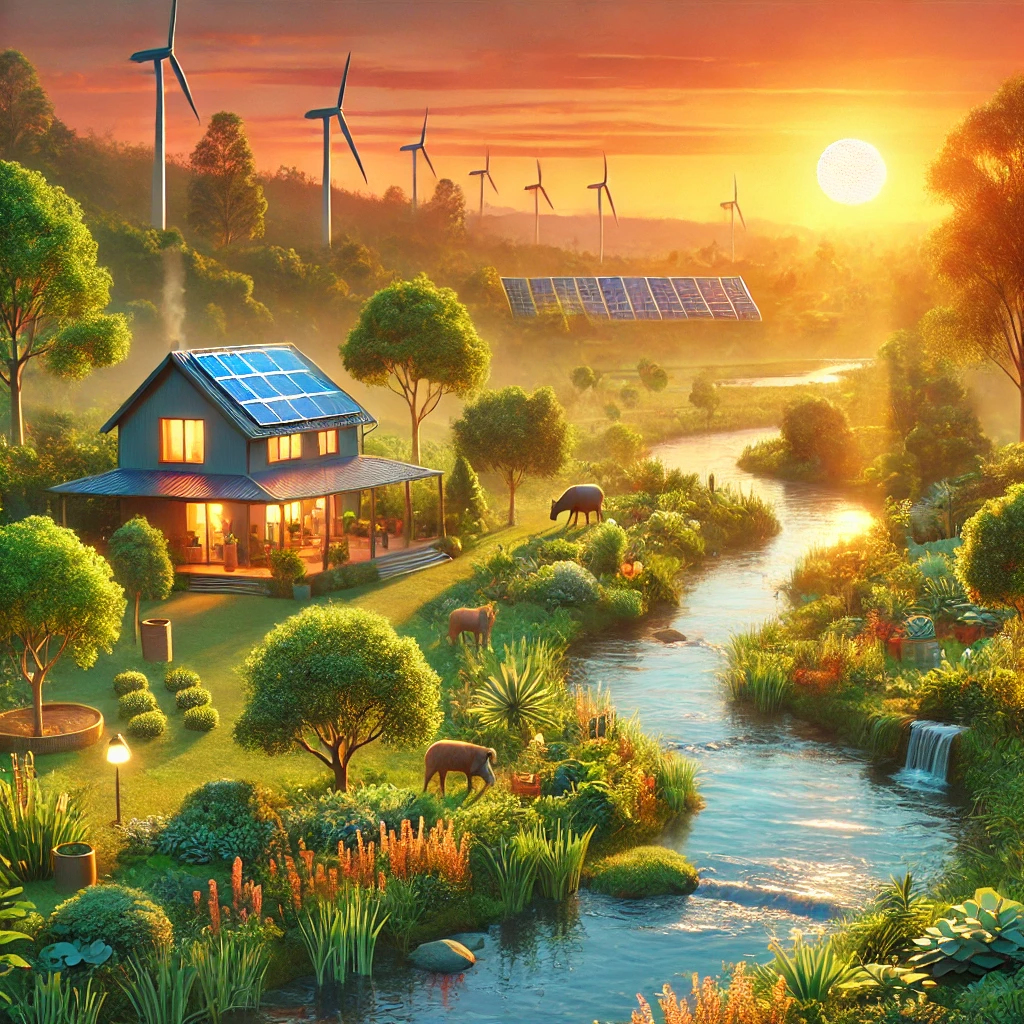
4. Protection of Biodiversity and Ecosystems
Sustainable living supports the protection of biodiversity and the preservation of ecosystems, which are essential for the health of the planet. Practices like supporting organic and regenerative agriculture, reducing the use of harmful pesticides and fertilizers, and avoiding products linked to deforestation (such as palm oil) all help protect wildlife and their habitats.
Biodiversity is crucial for the resilience of ecosystems, which provide humans with essential services like pollination, clean air and water, and soil fertility. By living sustainably, individuals contribute to the conservation of species and ecosystems, helping to maintain the balance of nature and protect it from human-driven destruction.
5. Reduction of Pollution
Sustainable living helps reduce various forms of pollution that degrade the environment and threaten public health. Air pollution, largely caused by the burning of fossil fuels, industrial emissions, and vehicle exhaust, can lead to respiratory problems, acid rain, and smog. By switching to cleaner energy sources and sustainable transportation methods, individuals help improve air quality.
Water pollution, often the result of agricultural runoff, industrial waste, and improper disposal of chemicals, also poses serious risks to ecosystems and human health. Sustainable living practices, such as reducing chemical use, properly disposing of hazardous waste, and supporting industries that adopt eco-friendly practices, play a crucial role in minimizing water pollution.
6. Preservation of Oceans and Marine Life
The oceans are increasingly under threat from pollution, overfishing, and climate change. Plastic pollution, in particular, has become a major issue, with millions of tons of plastic waste entering the ocean each year, harming marine life and ecosystems. Sustainable living practices that reduce plastic consumption, support sustainable seafood and minimize the release of harmful chemicals into the water help protect the health of our oceans.
Additionally, reducing your carbon footprint contributes to slowing down ocean acidification, a result of increased CO2 in the atmosphere. Ocean acidification harms coral reefs and marine biodiversity, disrupting food chains and ecosystems that millions of people rely on for sustenance.
7. Promotes a Circular Economy
Sustainable living encourages a shift from a linear economy—where products are made, used, and disposed of—to a circular economy, where resources are reused, recycled, and reintegrated into the production cycle. This reduces the need for virgin materials, minimizes waste, and fosters a more sustainable approach to production and consumption.
In a circular economy, products are designed with longevity and recyclability in mind, and consumers are encouraged to repair, refurbish, and reuse items rather than dispose of them after a single use. This transition not only benefits the environment by reducing resource extraction and waste but also supports sustainable industries and jobs.
7. Tips to Start Your Sustainable Lifestyle Today
Transitioning to a sustainable lifestyle may seem daunting, but the good news is that it’s easier than you think. Small, simple changes can have a significant impact over time. Whether you’re looking to reduce your environmental footprint, save money, or improve your health, there are many practical ways to begin living more sustainably. Here are some actionable tips to get started on your sustainable journey today:
1. Reduce Energy Consumption
One of the most effective ways to live more sustainably is by reducing your energy use. Start by making small adjustments in your home that will lower your electricity consumption:
- Switch to energy-efficient LED light bulbs, which use significantly less power and last longer.
- Unplug appliances when they’re not in use, as they can still draw energy even when turned off.
- Install a programmable or smart thermostat to optimize heating and cooling.
- Consider using renewable energy sources like solar panels if possible, or switch to a green energy provider in your area.
These steps not only help reduce your carbon footprint but also cut down on your utility bills, offering long-term savings.
2. Cut Down on Water Usage
Conserving water is another crucial aspect of sustainable living. To reduce water consumption, you can:
- Install low-flow showerheads, faucets, and toilets to minimize water usage without sacrificing functionality.
- Fix leaks promptly to prevent water waste.
- Collect rainwater for gardening or outdoor cleaning tasks.
- Be mindful of water use when washing dishes or brushing your teeth by turning off the tap when it’s not needed.
Reducing water waste is especially important in regions facing water scarcity and can have a meaningful environmental impact.
3. Choose Sustainable Transportation
The transportation sector is a major contributor to greenhouse gas emissions. By making more eco-friendly travel choices, you can significantly reduce your environmental footprint:
- Walk or cycle whenever possible, especially for short distances. It’s not only better for the environment but also for your health.
- Use public transportation or carpool to reduce the number of vehicles on the road.
- Consider switching to a hybrid or electric vehicle to cut down on fuel consumption and emissions.
- For longer trips, try to choose more sustainable options, such as train travel instead of flying, whenever feasible.
Sustainable transportation habits help reduce air pollution and contribute to a cleaner, healthier environment.
4. Adopt a Plant-Based Diet
Your food choices have a significant impact on the environment. Adopting a plant-based diet, or even incorporating more plant-based meals into your routine, can help reduce greenhouse gas emissions, conserve water, and protect biodiversity:
- Start by incorporating meat-free meals a few times a week, such as Meatless Mondays.
- Choose organic, locally grown produce to support sustainable farming practices and reduce the environmental cost of transporting food over long distances.
- Reduce food waste by planning meals ahead of time, using leftovers creatively, and composting organic waste.
While going completely plant-based is a significant step, even small changes in your diet can help lessen your environmental impact.
5. Minimize Waste and Use Reusables
Reducing the amount of waste you generate is a key element of sustainable living. Here’s how you can get started:
- Opt for reusable products instead of single-use items. Bring a reusable water bottle, coffee cup, and shopping bags with you when you’re on the go.
- Choose items with minimal packaging or buy in bulk to reduce the amount of plastic and waste generated.
- Repair, reuse, or upcycle items instead of discarding them. For instance, fix old clothes or repurpose them for new uses.
- Compost organic waste, such as food scraps, to reduce landfill waste and create nutrient-rich soil for your garden.
By being mindful of what you throw away, you can contribute to reducing the growing problem of waste pollution.
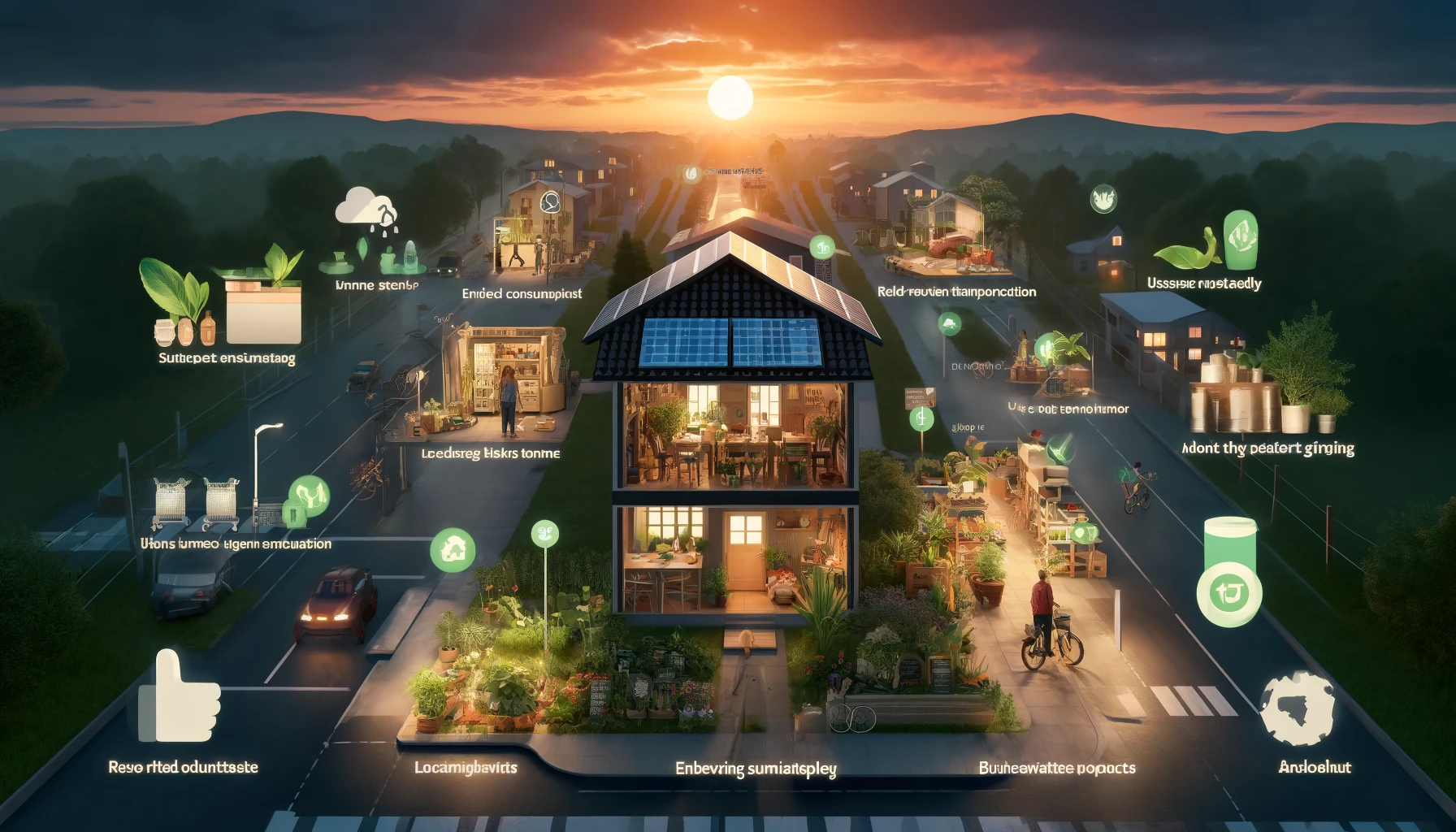
6. Buy Eco-Friendly Products
When shopping, be mindful of the products you purchase. Opt for eco-friendly and sustainable alternatives whenever possible:
- Choose products made from recycled or renewable materials, such as bamboo or organic cotton.
- Support companies and brands that prioritize sustainability, fair trade, and ethical labor practices.
- Buy durable, high-quality products that will last longer, reducing the need for frequent replacements.
Making conscious consumer choices can help reduce the environmental and social impact of the products you use.
7. Support Local Businesses
Supporting local businesses is an effective way to live sustainably while strengthening your community. When you buy locally produced goods:
- You reduce the environmental costs associated with transportation and shipping.
- You support small businesses, which often have more sustainable and ethical practices compared to large corporations.
- You contribute to the local economy, helping create jobs and build a more resilient community.
Visit local farmers’ markets, buy locally produced crafts, and support nearby small businesses whenever possible to reduce your environmental impact.
8. Embrace Minimalism
Minimalism goes hand in hand with sustainable living. By embracing a more minimalist lifestyle, you focus on quality over quantity and reduce the need for excessive consumption. Here’s how:
- Be intentional with your purchases—buy only what you truly need and invest in high-quality, long-lasting items.
- Declutter your home and donate or sell items you no longer use.
- Avoid impulsive buying habits and consider whether an item will truly add value to your life before purchasing.
By simplifying your lifestyle, you can reduce waste, conserve resources, and promote a more sustainable way of living.
9. Educate Yourself and Raise Awareness
Sustainable living is a continuous journey, and staying informed is key. Take time to educate yourself about environmental issues and the impact of your daily choices:
- Read books, watch documentaries, and follow environmental news to stay informed about sustainability challenges and solutions.
- Share your knowledge with friends, family, and your community to raise awareness and inspire others to adopt sustainable practices.
- Join local or online sustainability groups to connect with like-minded individuals and participate in initiatives that promote eco-friendly living.
The more you learn about sustainable living, the better equipped you’ll be to make informed choices that benefit both you and the environment.
10. Start Small, but Be Consistent
Sustainable living doesn’t require an all-or-nothing approach. The key is to start small and build sustainable habits gradually. Focus on one or two areas at a time—such as reducing energy use or minimizing waste—and incorporate more sustainable practices into your routine as you go. Over time, these small changes can lead to significant positive impacts on the environment.
8. Is it Possible to Live Sustainably in 2024?
As the urgency to address climate change and environmental degradation grows, more people are considering whether it’s genuinely possible to live sustainably in 2024. The good news is that advancements in technology, increased awareness, and more accessible eco-friendly options make sustainable living not only possible but also practical. However, it requires commitment, thoughtful choices, and sometimes a shift in mindset. Here’s why living sustainably in 2024 is achievable and how you can make it work:
1. Technological Advancements and Renewable Energy
In 2024, sustainable living is more attainable than ever, thanks to significant advancements in technology. Renewable energy options, such as solar, wind, and hydropower, have become more affordable and widely available. Many households now have access to solar panels, home battery storage systems, and energy-efficient appliances that significantly reduce reliance on fossil fuels.
Electric vehicles (EVs) and charging infrastructure are more accessible than ever before, providing an eco-friendly alternative to gasoline-powered cars. EVs are increasingly affordable, with longer ranges and more charging stations popping up worldwide. In many places, governments offer incentives for purchasing EVs and installing renewable energy solutions, making it easier for individuals to switch to sustainable energy and transportation options.
2. Eco-Friendly Products Are More Accessible
In recent years, the market for eco-friendly products has expanded dramatically. From biodegradable packaging to sustainable clothing and organic food, consumers have a wider range of choices than ever before. Large corporations and small businesses alike are shifting toward more sustainable practices, producing goods that are better for the environment.
In 2024, you can find sustainable alternatives to most products you use daily, such as reusable water bottles, bamboo toothbrushes, compostable containers, and energy-efficient electronics. Many of these products are affordable and accessible, making it easier for individuals to adopt a more eco-conscious lifestyle without breaking the bank.
3. Support from Governments and Policy Changes
Governments around the world are increasingly adopting policies that promote sustainable living. In many countries, environmental regulations are becoming stricter, requiring businesses to reduce their carbon emissions, minimize waste, and adopt greener practices. Incentives for individuals, such as tax credits for energy-efficient home upgrades or rebates for purchasing electric vehicles, encourage people to make sustainable choices.
In 2024, global efforts toward sustainability continue to grow, with international agreements like the Paris Climate Accord pushing for greater environmental responsibility. As these policies take effect, sustainable options become more affordable and accessible to the general population, making it easier for individuals to live sustainably.
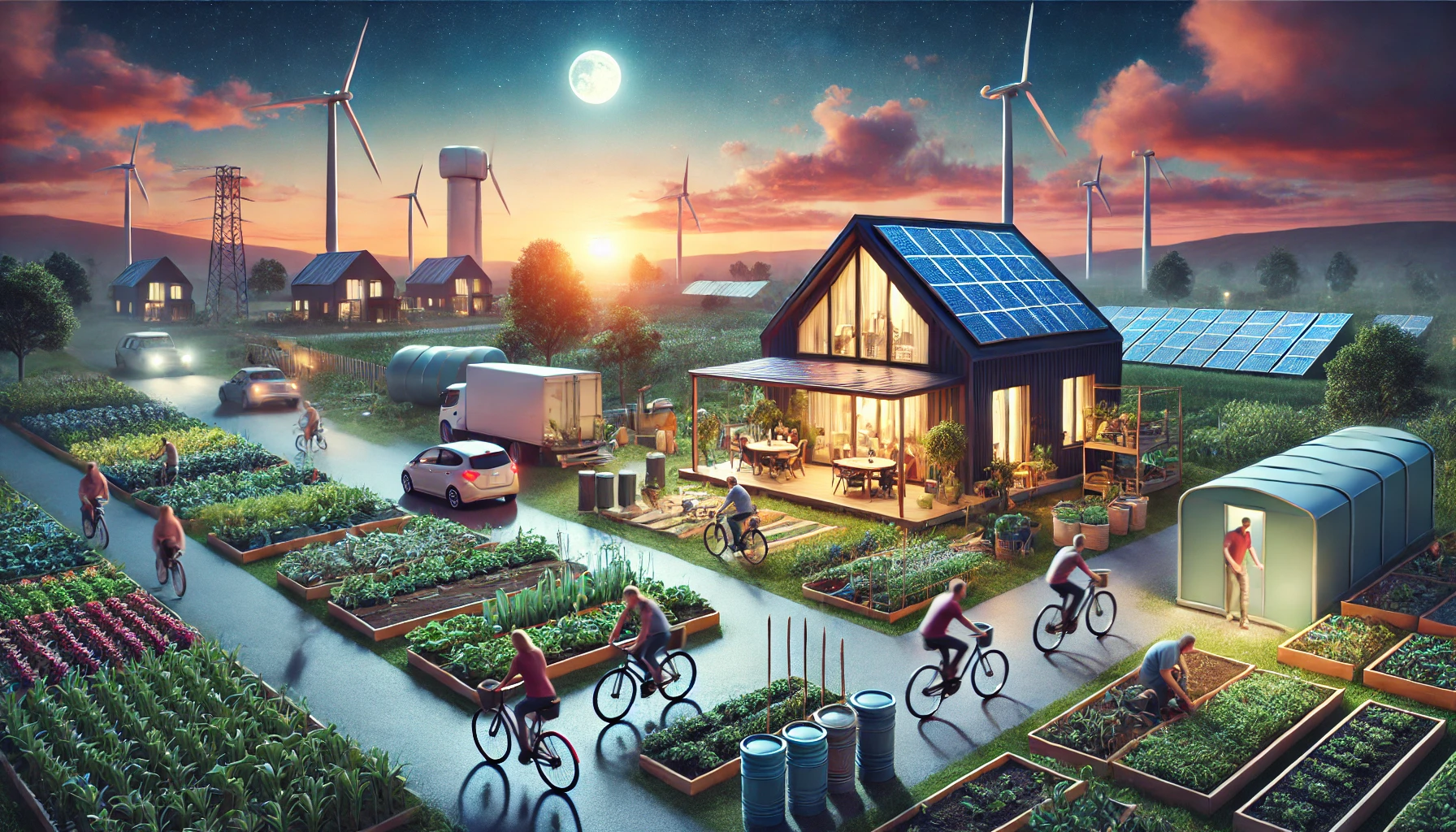
4. Growing Awareness and Environmental Education
Public awareness of environmental issues has never been higher. Through media, education, and activism, people are more informed about the impacts of climate change, pollution, and resource depletion. This increased awareness has driven demand for sustainable products and services, encouraging businesses to adopt eco-friendly practices.
Educational resources, both online and in schools, are more readily available, providing valuable information on how to live sustainably. Whether through documentaries, podcasts, blogs, or community workshops, people have access to a wealth of knowledge on how to reduce their environmental impact.
5. Urban and Rural Sustainability Initiatives
Sustainable living isn’t limited to rural areas or those who can live off-grid. Many cities have adopted sustainability initiatives that make it easier for urban dwellers to live eco-consciously. Public transportation systems are expanding and becoming more energy-efficient, reducing the need for cars. Cities are also promoting cycling, walking, and the use of electric scooters to reduce traffic congestion and lower carbon emissions.
Urban farming, green rooftops, and community gardens are becoming more common in cities, allowing residents to grow their food and connect with nature, even in densely populated areas. Recycling programs and waste reduction efforts are widespread, helping urban residents minimize their environmental footprint.
In rural areas, living sustainably is often intertwined with traditional lifestyles, where people rely more on locally sourced food, renewable energy, and self-sufficiency. Whether in the city or countryside, sustainable living is becoming a reality for more people in 2024.
6. Challenges to Sustainable Living
While living sustainably in 2024 is possible, it comes with its own set of challenges. For many, the upfront costs of renewable energy installations, electric vehicles, or energy-efficient home upgrades can be prohibitive. Although prices for these technologies are dropping, they may still be out of reach for some individuals and families, especially in low-income communities.
Additionally, the global economy’s reliance on mass production and consumption poses a challenge for large-scale sustainability. Many products still come from industries that exploit natural resources or rely on unsustainable practices. The transition to a circular economy, where resources are reused and recycled, is still in its early stages, requiring ongoing commitment from businesses and governments to push for change.
Finally, living sustainably often requires lifestyle adjustments that not everyone may find easy. Breaking habits of overconsumption, reducing waste, and adopting energy-efficient practices requires a level of mindfulness and discipline that can be difficult to maintain.
7. Practical Steps to Start Living Sustainably in 2024
Despite the challenges, there are many practical steps you can take to start living more sustainably right now. Here’s how you can make sustainable choices in 2024:
- Switch to renewable energy: Whether through solar panels, wind energy, or choosing a green energy provider, transitioning to renewable energy is a powerful way to reduce your carbon footprint.
- Adopt sustainable transportation: Consider walking, biking, or using public transport whenever possible. If you drive, look into electric vehicles or carpooling.
- Reduce waste: Focus on reducing, reusing, and recycling. Choose reusable products, avoid single-use plastics and compost organic waste.
- Eat a more sustainable diet: Incorporate more plant-based meals into your diet, buy local and organic produce, and avoid highly processed foods.
- Conserve water and energy: Install water-saving fixtures, use energy-efficient appliances, and practice mindful habits like turning off lights and electronics when not in use.
- Support sustainable brands: Research and choose companies that prioritize sustainability, ethical labor practices, and eco-friendly materials.
9. Common Misconceptions About Sustainable Living
As sustainable living becomes more mainstream, misconceptions and myths about what it truly entails continue to persist. These misunderstandings can deter people from making eco-friendly choices or create unnecessary barriers to adopting sustainable practices. To help you navigate through the noise, here are some of the most common misconceptions about sustainable living and the truth behind them:
1. Sustainable Living Is Too Expensive
One of the biggest misconceptions about sustainable living is that it’s costly and only accessible to those with higher incomes. While some sustainable options, like solar panels or electric vehicles, require an upfront investment, many aspects of sustainable living save you money in the long run. For example:
- Energy-efficient appliances and LED lighting reduce electricity bills over time.
- Growing your food or buying seasonal produce locally can lower grocery costs.
- Minimizing waste by using reusable products cuts down on the need to buy single-use items.
Additionally, many small changes, such as turning off lights when not in use, conserving water, or choosing to walk or bike instead of driving, have little to no cost but make a positive environmental impact. Sustainable living doesn’t require expensive investments—it can be done gradually and within any budget.
2. Living Sustainably Means Making Huge Sacrifices
Another common myth is that living sustainably requires significant sacrifices, such as giving up comfort or convenience. While sustainable living does involve being more mindful of consumption and habits, it doesn’t mean abandoning your current lifestyle altogether. Many sustainable practices seamlessly integrate into daily life:
- Energy-efficient upgrades like better insulation or smart thermostats improve comfort while saving energy.
- Reusable products like water bottles, shopping bags, and containers are just as convenient as their disposable counterparts and save money in the long run.
- Eating more plant-based meals doesn’t mean you have to give up all animal products—it can simply mean incorporating more fruits, vegetables, and grains into your diet.
Living sustainably is about making thoughtful choices, not about depriving yourself of the things you enjoy.
3. Sustainable Living Isn’t Effective Without Large-Scale Change
Many people believe that individual efforts are insignificant compared to the need for large-scale systemic change. While it’s true that governments and corporations need to take substantial action to address global environmental challenges, individual choices still matter:
- Consumer demand for sustainable products and practices drives industries to adopt greener methods.
- Community-level efforts like recycling programs, local farmers’ markets, and energy conservation campaigns all start with individuals making eco-conscious decisions.
- The collective impact grows as more people adopt sustainable practices, leading to a cultural shift that can influence larger policy changes.
Every effort, no matter how small, contributes to the greater goal of sustainability. Individual actions can inspire others and encourage systemic change over time.
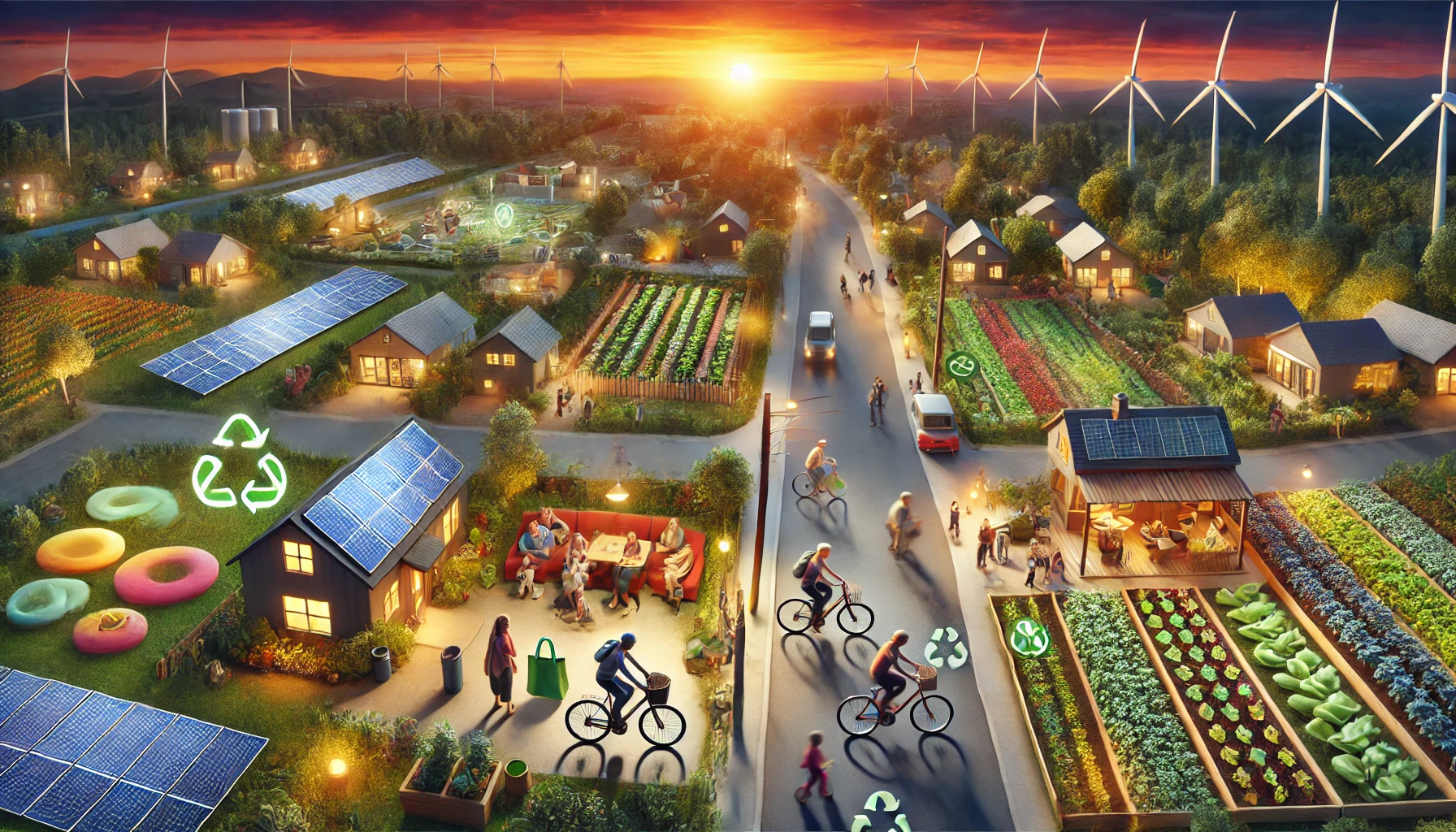
4. Sustainable Living Is Only About the Environment
Sustainable living is often thought of solely in terms of environmental benefits, but it also encompasses social and economic dimensions. It’s about creating a balance between environmental stewardship, social responsibility, and economic well-being. Key aspects include:
- Supporting fair trade and ethical labor practices ensures that workers are treated fairly and paid a living wage.
- Building resilient local economies by supporting small, local businesses and sustainable farming practices, helping to strengthen communities and promote economic stability.
- Promoting social equity by addressing issues like food insecurity, access to clean water, and affordable renewable energy in underserved communities.
Sustainable living is about making choices that benefit both the planet and society as a whole, contributing to a more equitable and just world.
5. Sustainable Living Is Too Time-Consuming
Many people believe that adopting a sustainable lifestyle requires a significant time commitment, whether it’s sorting recyclables, growing your food, or switching to renewable energy. In reality, many sustainable practices are quick and easy to incorporate into your daily routine:
- Switching to reusable products, like water bottles and shopping bags, is just as convenient as using disposable ones.
- Shopping locally or buying in bulk can save you time by reducing trips to the store and avoiding excess packaging.
- Energy conservation habits like turning off lights, unplugging devices, or washing clothes in cold water are simple changes that don’t require extra time.
While some sustainable choices may involve an initial learning curve, most become second nature with time and offer long-term benefits without being time-consuming.
6. You Have to Be 100% Perfect to Live Sustainably
A major misconception is that sustainable living requires perfection—that you must adopt a completely zero-waste lifestyle, go vegan, or live off-grid to make a meaningful impact. This kind of all-or-nothing thinking can discourage people from making even small changes. The truth is:
- Sustainable living is about progress, not perfection. You don’t have to be perfect to make a positive difference. Small actions, like reducing single-use plastics, conserving energy, or eating more plant-based meals, can add up over time.
- Everyone’s sustainable journey is different. It’s important to make choices that fit your lifestyle and capabilities. Whether you’re composting, switching to renewable energy, or simply using a reusable coffee cup, each step matters.
- Sustainability is about balance. It’s okay to make compromises and do what’s manageable for you. The key is to stay mindful of your consumption and make improvements where possible.
Sustainable living is a journey, and even small, consistent actions contribute to a healthier planet.
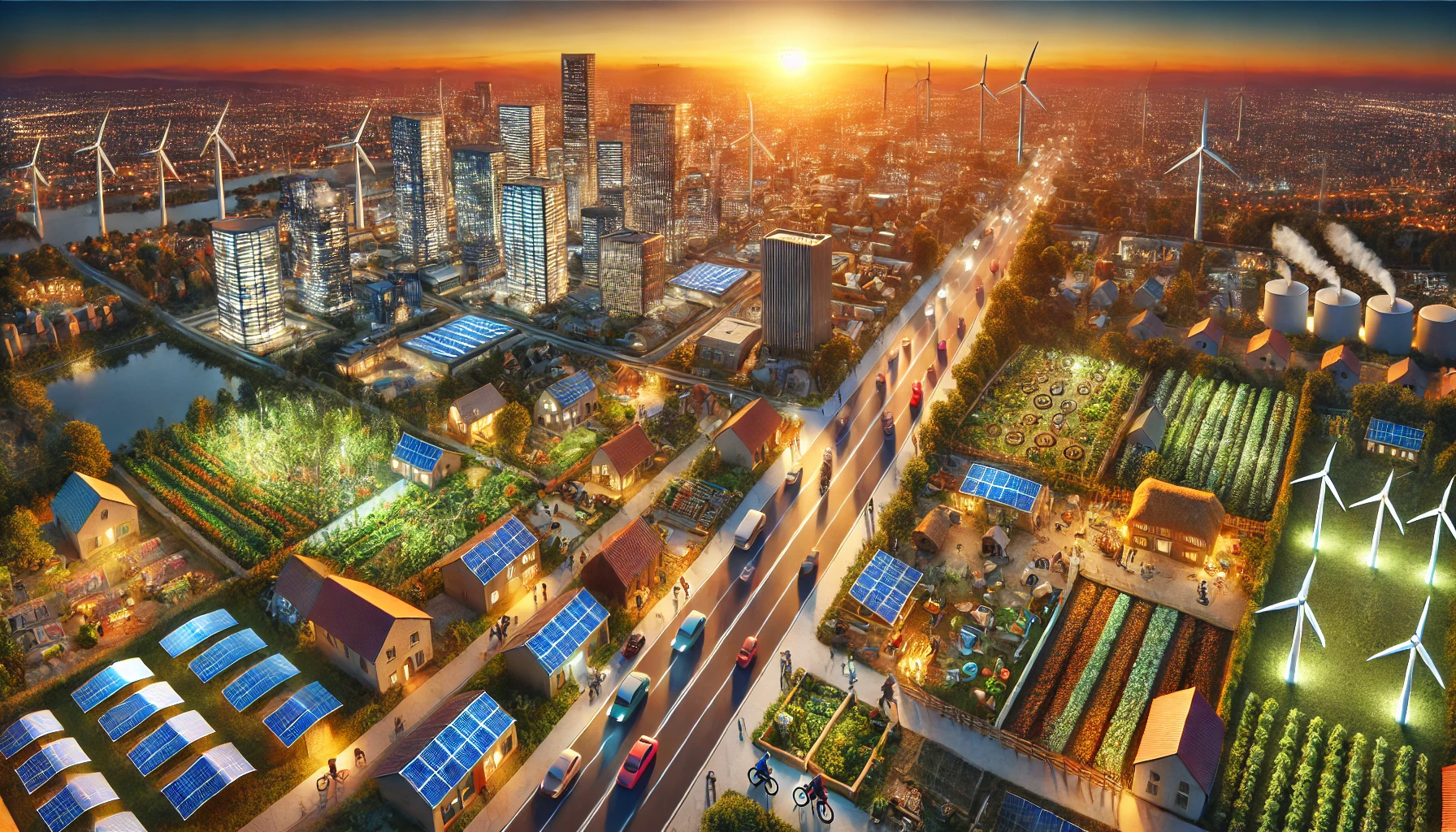
7. Only People in Rural Areas or Off-Grid Communities Can Live Sustainably
Some people believe that sustainable living is only feasible in rural areas or for those who live off-grid. However, sustainable living is possible in urban environments as well. Cities are increasingly implementing green initiatives, and urban residents have access to numerous sustainability opportunities:
- Public transportation and biking are more accessible in urban areas, making it easier to reduce car use and lower carbon emissions.
- Urban farming and community gardens provide city dwellers with opportunities to grow their food and support local agriculture.
- Energy-efficient apartment buildings and city-wide recycling programs allow urban residents to reduce their environmental footprint.
Conclusion
Sustainable living is not just a trend; it’s a meaningful approach to creating a healthier, more equitable world for future generations. By making conscious choices, you can reduce your environmental impact, improve your well-being, and even save money in the process. From small changes like using reusable products and conserving energy to bigger commitments like adopting renewable energy and supporting local economies, each step you take brings us closer to a more sustainable future. Debunking common misconceptions reveals that sustainable living is accessible to everyone, regardless of location or lifestyle. It’s about progress, not perfection—making thoughtful choices that collectively lead to a greener, more sustainable planet. Now is the perfect time to start your journey toward sustainable living.


